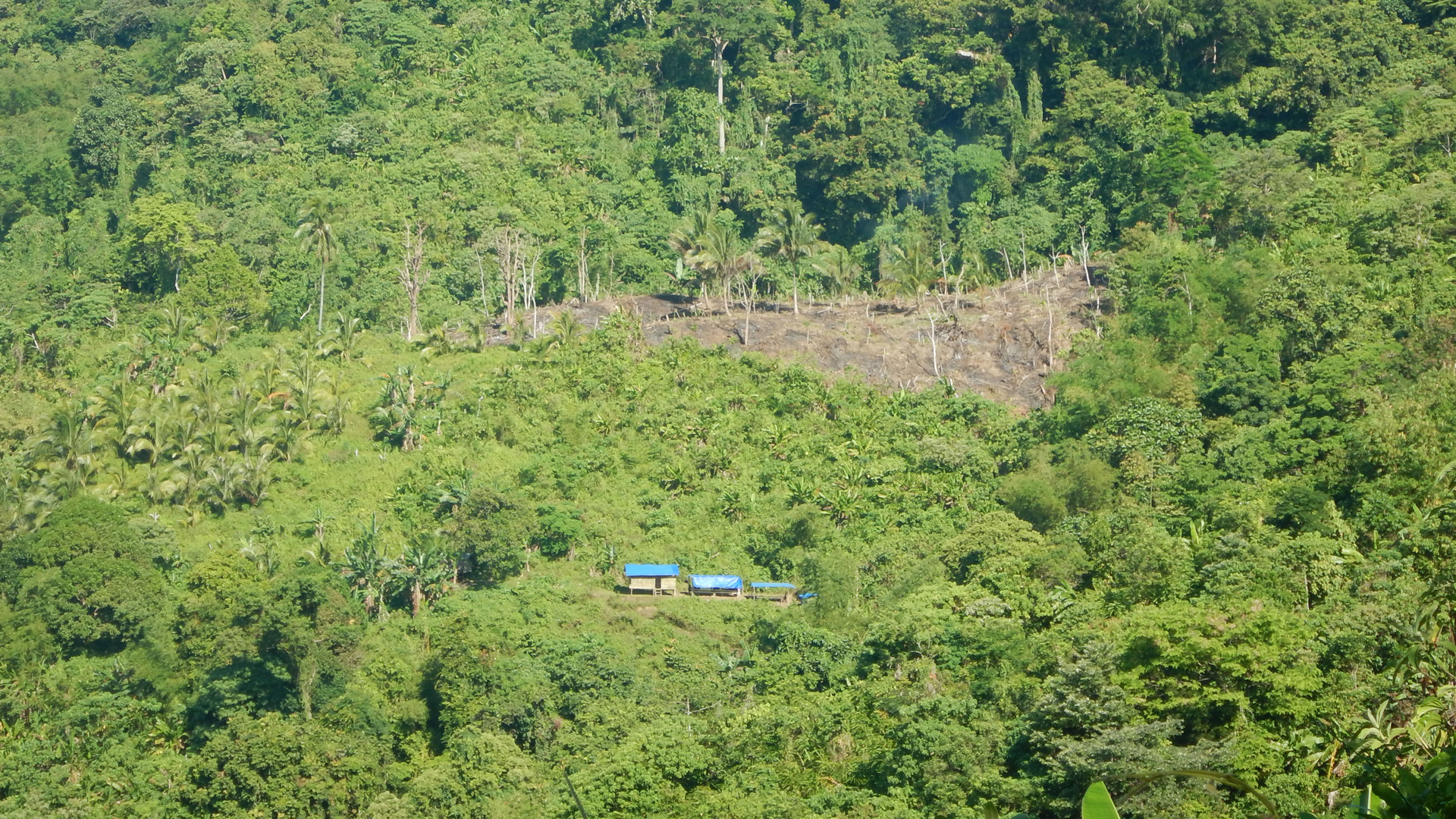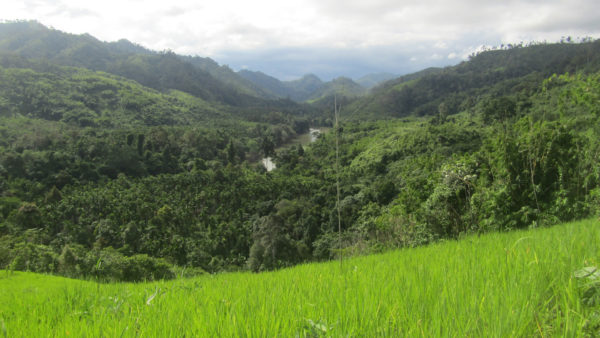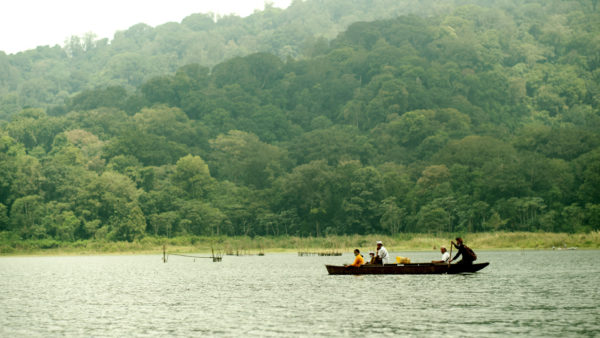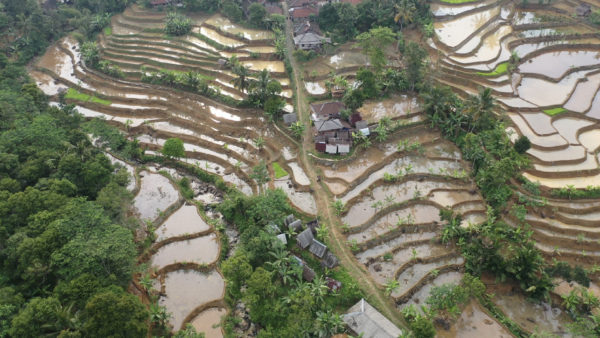First published on 10/05/2023, and last updated on 11/13/2023
By John Vincent Colili and Maica Saar, Samahan ng Nagkakaisang Katutubong Kabataan (SNaKK)
Note: This article is from the recently published report “Celebrating territories of life in Southeast Asia.” The text has been edited for the ICCA Consortium website.
The Pala’wan tribe inhabits most of the rugged montane forest of southern Palawan in the southwestern tip of the Philippines. We maintain a 6,000-hectare ICCA located in the upland areas of Barangays Amas and Saraza in the Municipality of Brooke’s Point. The lush bountiful forest of our ICCA is the main source of non-timber forest products such as parukpok (tigergrass), buri (corypha) and begtik (almaciga)among others, which acts as the primary source of livelihood for many of the community members, particularly those residing in the upland areas.
Due to the forested location of most of the Pala’wan settlements, nature is central to the traditions and beliefs of the Pala’wan people. The Indigenous farming or pag-uma for example, is guided by a tightly knitted tradition of paying respect to nature before clearing, before planting and even after harvest. Generations of Pala’wan have also managed effective techniques on safekeeping and preservation of vital forest resources. The bertas, an Indigenous zoning system, sets limits on land use for farming and housing to protect watersheds and important forest patches in order to preserve resources, such as the almaciga, which is treated with high regard as it brings bountiful income for the community. Thus, even though almaciga stands are frequently utilized for resin production, there are no recorded mortalities so far.
Another important thing the forest brings to us are wild foods, consisting of edible fruits and vegetables, which vary in taste, size, color and abundance. For our kin residing in the bountiful forest of southern Palawan, wild foods are an integral part of day-to-day diet and an important source of nutrition. From ridge ferns, deep forest fruit trees and riverside roots, there are countless wild foods that can be found in our lush ancestral lands. These wild foods are either consumed directly, fermented, or even processed.
Modern economic and educational demands have pushed many Indigenous youth to move out of their communities in order to seek education and employment opportunities elsewhere. Although some have learned Indigenous knowledge, a huge percentage of the youth who move out lacks in-depth understanding to continue these practices and pass it down to the next generation. In most cases, the youth only know the hows, but do not know the whys or the underlying reasons behind the practices, which mostly can only be acquired through firsthand experience.
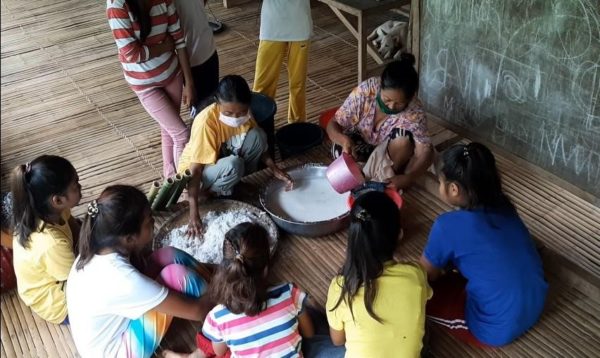
The onset of digital entertainment systems in the form of mobile games, online streaming sites and social media have also decreased the interest of many, particularly the youth, in learning the traditional ways of food gathering and preparation. The decreased outdoor experience due to these new modes of entertainment has lessened the exposure of younger community members to nature and wild foods. Back in the old days, most of the kids learned about wild foods by playing with their friends in the wild, or by building groups or parties in order to raid a specific fruit tree in the groves. The introduction of new food sources has also lessened the need or demand for wild foods. Unlike in the old times when young kids hike hills and venture in groves to gather fruits and berries, most kids nowadays can just go to a neighborhood store and buy tasty but unhealthy snacks. These developments have drastically changed the lifestyle of the youth, limiting their ability or interest to learn more about wild foods.
Our fascination for wild foods is one of the reasons we created the Samahan ng Nagkakaisang Katutubong Kabataan (SNaKK), an organization of Indigenous youth with members from Amas, Saraza, Mainit and other parts of Brooke’s Point. The organization aims to create a fun and safe space for Indigenous youth to learn new things and improve their skills. SNaKK also envisions contributing to community empowerment, forest protection and safekeeping of Indigenous Knowledge, Systems, and Practices (IKSP).
With the goal of safekeeping Indigenous knowledge, especially on wild foods, SNaKK with support from Non Timber Forest Products – Exchange Program (NTFP-EP) ventured into knowledge transfer and documentation activities such as youth camps, immersion activities and lectures. During immersion activities, members of the organization are invited to participate in nursery building or tree-planting activities, wherein the guides introduce the young participants to wild foods. In some cases, older guides would stop for a while during hikes in order to show a wild food plant and discuss its taste and various applications, which the participants would take note of. During these activities, the snacks and delicacies that are being served are based on wild foods.
Aside from these, SNaKK also initiates activities such as food festivals wherein tribal elders share and discuss various things with the youth. In these events, the younger generations learn firsthand various ways of traditional food preparation, from the cumbersome process of making the purad (traditional yeast) to finding the correct measurements of coconut milk for the lutlut (sticky-rice delicacy). They also encounter different wild foods, such as lipso and usaw, and even witness some rare Indigenous rituals. To make the events more interesting and enticing to the youth, fun learning activities are usually integrated in the program. Interactive participation, wherein the youth themselves practice or share what they learn, are highly encouraged. With the permission from the elders, SNaKK takes these opportunities to document the wild foods and food preparation practices. The video and written documentation are then processed and stored for safekeeping and used in future activities.
Even though these activities can be challenging to organize, the youth’s eagerness and passion to learn and experience new things can always be relied upon. During the first activities of SNaKK back in 2015, we experienced firsthand how mindsets can change with just a basic understanding of the importance of wild foods and traditional food preparation practices. Because in the process of all these learning activities, it is not just the existence of the wild foods that we learned, but also the underlying stories, legends, myths and practices that come with it.
However, we realize that this initiative is not enough. As long as the opportunities in the communities are few, more and more young Indigenous members will be forced to work in faraway places. Moreover, due to the lack of necessary skills and technical capacity of youth organizations such as SNaKK, we can only do so much. To address such difficulties, SNaKK is attempting to explore the creation and nurturing of strong networks and linkages with like-minded groups all over the Philippines. Interestingly enough, the hardships brought upon by the disruption of commercial trade and lockdowns due to the COVID-19 pandemic have helped in enlightening the youth on the importance of wild foods and traditional delicacies in maintaining communal food security. This opens a new window of opportunity to extend this initiative to many more Indigenous youth. Having a wider network will allow the exchange of ideas and resources in making things possible. It also opens up opportunities for collaboration and partnerships that can help empower and inspire the members of the organization. Though simple and not very large scale, our activities really help in reigniting the interest of the youth in wild foods and appreciate our Indigenous legacy. These events also help to open the eyes of the youth to the existing problems Indigenous communities face, such as loss of wild foods, loss of Indigenous knowledge, and the effects of climate change. As we say in SNaKK, it must be understood that we the youth are the future of our tribe, our culture, and our environment, thus it is very important for us to take an active part in finding solutions to pressing communal issues.
Rice and Food Sovereignty from the Krayan Highlands
Indonesia
by Cristina Eghenter
The Krayan Highlands is the homeland of the Lundayeh and Sa’ban Indigenous Peoples in North Kalimantan, Indonesia, who have deep cultural traditions and comprise over 70 villages with a total population of over 12,000. It forms one trans-border ancestral territory with the Lun Bawang and Kelabit Highlands in Sarawak and Sabah, Malaysia, who share a common linguistic, historical and cultural heritage. The Krayan Highlands are a place of enchanting views, wide valleys interlaced with traditional paddy fields, bamboo groves and fruit trees embraced by gentle slopes covered with forest.
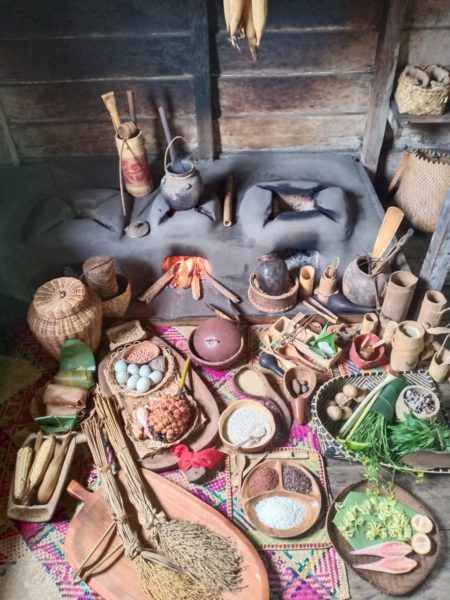
The communities have traditionally been food secure due to their indigenous system of wet rice agriculture based on local knowledge, local seeds, water buffaloes and a healthy environment. Men and women here have been the custodians of local agrobiodiversity. Over 40 varieties of rice are planted and cultivated in this area, plus three varieties of sorghum and millet. The fruit biodiversity is also very high and many local varieties grow in fruit gardens and on the forest edges. This agrobiodiversity, locality and strong bonding with the territory have been for centuries a way to build security, resilience, adaptability, and reduce vulnerability to climate change and other events. The diversity of local food plants and crops is reflected in the local cuisine, luk kenen tau (our food).
The rice is as much food security as it is part of the cultural and ethnic identity of the people of the Krayan Highlands. In the face of other more destructive development options like oil palm plantations, the communities of the Krayan Highlands opted to protect the traditional agricultural practices. This was led by FORMADAT, the Alliance of the Indigenous Peoples of the Highlands, Indonesia and Malaysia, which was established in 2004 to encourage sustainable development in the Highlands and protect its cultural traditions and biodiversity. FORMADAT was instrumental in supporting this process and was one of the Equator Prize winners in 2015 in recognition of their efforts.
In 2016, they declared the Krayan Highlands an area for organic and traditional agriculture. They also successfully advocated with the District government in Nunukan to legislate in support of their declaration. In 2019, they formed a Slow Food Community. In the same year, a District Head’s regulation was issued to protect the traditional and organic agriculture of the Krayan Highlands. The Krayan Highlands and its Indigenous Peoples have now secured a sustainable and culturally appropriate future, and their practices, knowledge and their strong bond with the territory can safely be passed down to the younger generations.
